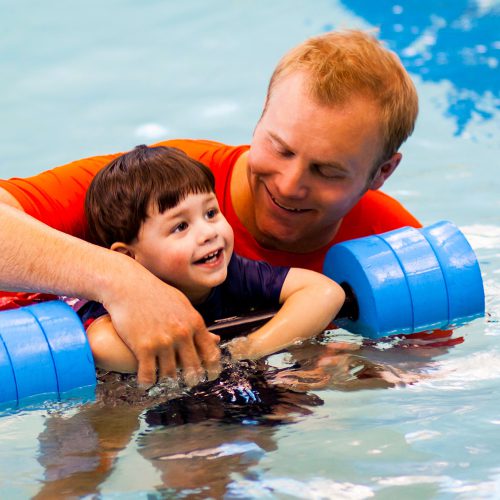
Many of us have fond childhood memories of pool parties and swimming at the beach. Naturally, we want our children to enjoy swimming, too. However, drowning is the leading cause of preventable death in children ages 1-4 and remains a leading cause of death for older children. One of the best things you can do to ensure your child enjoys swimming safely is to watch the water.
Parents often believe a number of misconceptions about drowning and water safety. In the movies, a person who’s drowning always splashes and yells for help, and the hero of the story leaps in to save them. Reality is very different.
Drowning Is Silent
Drowning often goes unnoticed even when it’s right in front of our eyes, because we expect splashing and screaming. Drowning can be silent. Your child probably won’t be able to yell or wave.
Similarly, we expect drowning to take a while. We expect to see thrashing and yelling and have time to get to the child. Instead, drowning happens quickly, in a matter of seconds to minutes. Parents often think they can look away or even leave for a minute or two, but that’s enough time for a child to drown. It’s important to stay attentive.
What About Lifeguards?
Lifeguards have an important job, but we should not place our faith entirely in them. Their job is to enforce rules and to rescue and resuscitate, not specifically to watch your child.
Many parents feel they can relax and not supervise their children as closely when a lifeguard is present, but a lifeguard needs to watch the entire pool. You can help keep your children out of danger by supervising them while swimming.
Additionally, many drowning deaths take place where no lifeguard is present, at family pools, natural bodies of water, and even bathtubs. It’s critical to watch your children any time they are in or near the water.
But My Child Can Swim
Swimming is an
important life skill, and we believe children should learn how to swim, along with techniques like flip to breathe that can save their lives in an emergency. However, we shouldn’t become complacent because our children can swim.
According to one review, 42% of children who drowned knew how to swim. Skill levels vary and even the strongest swimmers can get into trouble.
It’s important to teach children survival skills like flip to breathe and how to safely swim to a wall and pull themselves up to exit the pool. It’s also important that we don’t feel so comfortable with our child’s skills that we neglect to watch them closely.
What Can You Do?
Now that you’re aware of some of the misconceptions regarding children and drowning, you may be wondering what you can do to keep children safe. One of the best ways is simply to watch the water.
Young children and children who do not know how to swim should be kept under touch supervision. If your children are in or near the water, make sure you or another adult is close enough to touch them. That way, you’ll be able to quickly lift them to safety. That includes bath time, when many drowning deaths occur among young children.
Pool parties can be particularly dangerous. When we are in large groups, we tend to assume someone else is watching. Children have drowned with multiple adults in the vicinity.
If you host or attend a pool party, make sure all the adults know the risks, and take turns being the water watcher. While watching the water, do not check your phone, read a book, or socialize with other adults. Children can submerge in seconds.
Remember, many drownings occur when children accidentally fall into the water. Any time you are near a water source, be alert and watch the water. You could be the hero who saves a child’s life.
 Many of us have fond childhood memories of pool parties and swimming at the beach. Naturally, we want our children to enjoy swimming, too. However, drowning is the leading cause of preventable death in children ages 1-4 and remains a leading cause of death for older children. One of the best things you can do to ensure your child enjoys swimming safely is to watch the water.
Parents often believe a number of misconceptions about drowning and water safety. In the movies, a person who’s drowning always splashes and yells for help, and the hero of the story leaps in to save them. Reality is very different.
Many of us have fond childhood memories of pool parties and swimming at the beach. Naturally, we want our children to enjoy swimming, too. However, drowning is the leading cause of preventable death in children ages 1-4 and remains a leading cause of death for older children. One of the best things you can do to ensure your child enjoys swimming safely is to watch the water.
Parents often believe a number of misconceptions about drowning and water safety. In the movies, a person who’s drowning always splashes and yells for help, and the hero of the story leaps in to save them. Reality is very different.
